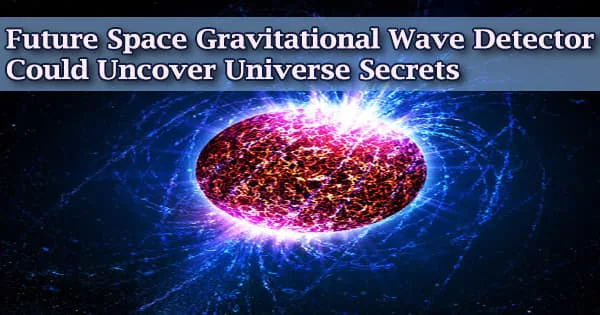According to recent studies, gravitational wave detections from space in the future may discover novel fundamental fields and reveal previously unknown facets of the Universe.
The gravitational-wave observations by the space interferometer LISA (Laser Interferometer Space Antenna) will be able to detect new fundamental fields with an unprecedented level of accuracy, according to Professor Thomas Sotiriou from the University of Nottingham’s Centre of Gravity and Andrea Maselli, researcher at GSSI and INFN associate. The study was released in the journal Nature Astronomy.
Researchers claim in this new study that LISA, the gravitational wave detector that will be deployed into orbit by ESA in 2037, will create new opportunities for cosmological research.
Professor Thomas Sotiriou, Director of the Nottingham Centre of Gravity explains:
“New fundamental fields, and in particular scalars, have been suggested in a variety of scenarios: as explanations for dark matter, as the cause for the accelerated expansion of the Universe, or as low-energy manifestations of a consistent and complete description of gravity and elementary particles. We have now shown that LISA will offer unprecedented capabilities in detecting scalar fields and this offers exciting opportunities for testing these scenarios.”
There is currently no proof of such fields based on observations of astrophysical objects with weak gravitational fields and little curvature of spacetime. There is reason to believe that at large curvatures, departures from general relativity or interactions between gravity and novel fields will be increasingly obvious.
This makes the discovery of GWs, which provided a fresh window into the strong-field regime of gravity, a rare chance to discover these fields.
New fundamental fields, and in particular scalars, have been suggested in a variety of scenarios: as explanations for dark matter, as the cause for the accelerated expansion of the Universe, or as low-energy manifestations of a consistent and complete description of gravity and elementary particles. We have now shown that LISA will offer unprecedented capabilities in detecting scalar fields and this offers exciting opportunities for testing these scenarios.
Professor Thomas Sotiriou
Extreme Mass Ratio Inspirals (EMRI), in which a stellar-mass compact object either a black hole or a neutron star inspirals into a black hole with a mass up to millions of times that of the Sun, are among the target sources of LISA and offer a prime environment for studying the strong-field regime of gravity.
Before entering the supermassive black hole, the smaller body completes tens of thousands of orbital cycles, creating lengthy signals that enable us to identify even the smallest deviations from Einstein’s theory and the Standard Model of Particle Physics.
For the first time, a rigorous assessment of LISA’s capacity to detect the existence of scalar fields associated with gravity interaction and to measure how much scalar field is carried by the small body of the EMRI has been undertaken by the researchers.
Surprisingly, because it is independent of the small body’s characteristics and the origin of the charge, this method is theory-agnostic. The research also demonstrates that such measurements are mappable to strong limitations on the theoretical parameters that deviate from the Standard Model or General Relativity.
LISA, which will operate in a constellation of three satellites orbiting the Sun millions of kilometers apart from one another, will be dedicated to the detection of gravitational waves by astrophysical sources. LISA will look for gravitational waves in a range of low frequency that terrestrial interferometers can’t access because of background noise.
LISA will be able to examine new families of astrophysical sources, distinct from those seen by Virgo and LIGO, such as the EMRIs, using the visible spectrum. This will provide a fresh window into the evolution of compact objects in a wide range of conditions throughout the Universe.





